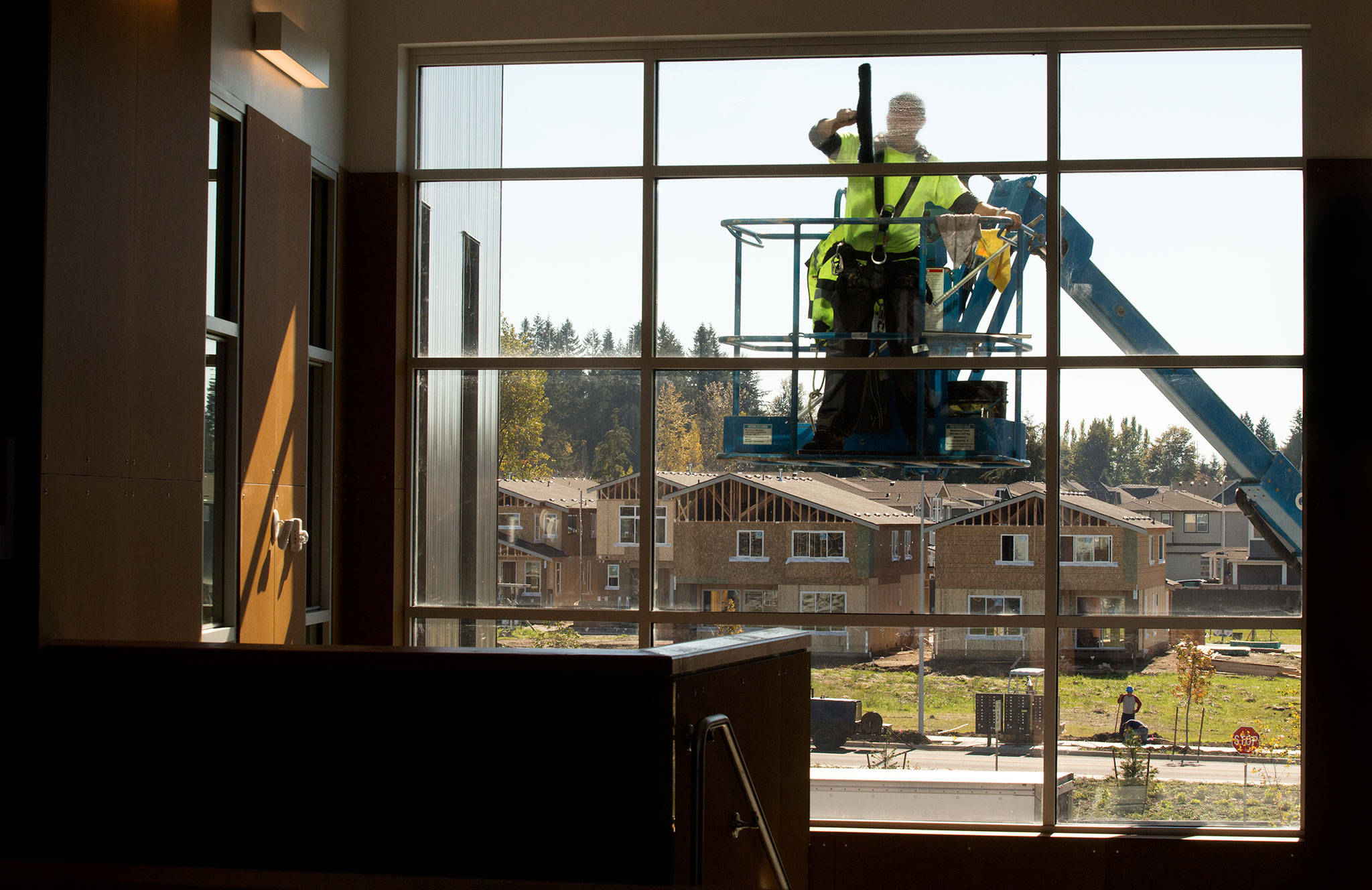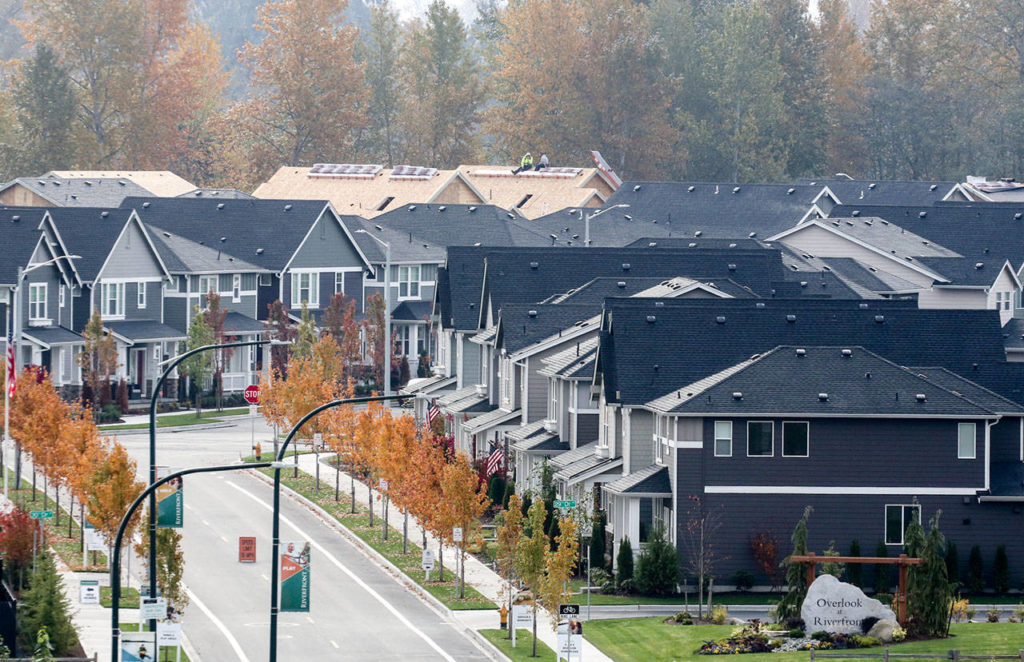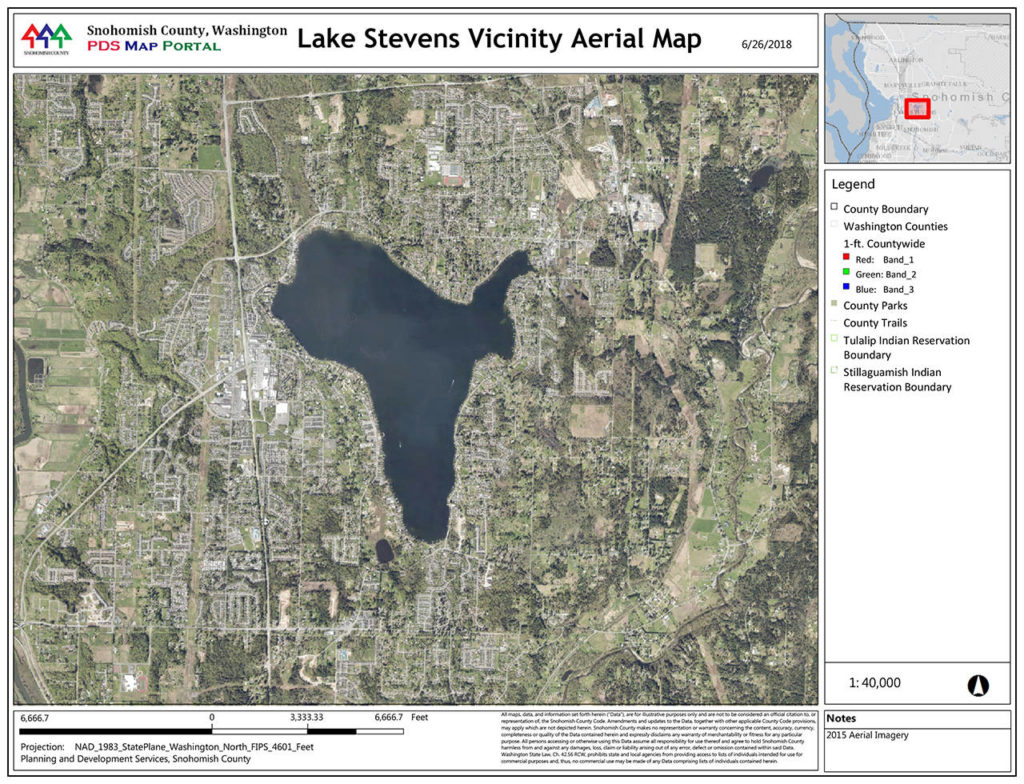EVERETT — The new houses, town homes and apartments must be filling up.
Snohomish County’s population tipped past 800,000, according to state figures released Tuesday.
The April 1 estimate of 805,120 people represented an increase of 15,720 compared with 2017 — roughly the equivalent of the populations of Snohomish and Sultan combined. That’s up nearly 2 percent. And it’s trending faster than the long-range average of 10,000 people per year predicted a few years back.
“It’s not surprising based on what we’re seeing,” said Ken Klein, an executive director for the county. “The main thing that drives people to Snohomish County is affordable housing and a beautiful place to live.”
Next door, in Island County, the population crept up by 1,070 this year and now stands at 83,860.
Snohomish County grew slightly faster than Washington as a whole. The state Office of Financial Management pegged Washington’s overall population at 7,427,600 this spring, an increase of 1.6 percent over last year. The change for the state, as in Snohomish County, was a bit smaller than the year before.
The main reason for the growth is migration, or more people moving to the Evergreen state than away, demographers said. Migration accounted for 71 percent of the state’s population growth this year. Natural increase — births over deaths — made up the other 29 percent.
The latest year-over-year change is hardly unprecedented. Snohomish County added more people in 2017 and 2015. From 1989 to 1991, the county added at least 20,000 people three years in a row.
Snohomish County remains the third-largest county in Washington, but was adding people a little faster than Washington’s other four metro counties. Only King County’s population has increased more, percentage-wise, since 2010.
No Snohomish County city, however, ranks among the top 10 for growth: Seattle, Vancouver, Spokane, Redmond, Pasco, Kent, Bellingham, Bellevue, Auburn and Kennewick, in that order.
Everett remains Washington’s seventh-largest city. It added about 1,400 people since last year, or about 1.3 percent, and now has 111,200 inhabitants.
Marysville was up 1.7 percent, adding 1,140 people for a population of 67,040.
Edmonds added 560 people, expanding nearly 1.4 percent, for a population of 41,820.
Lynnwood grew more: about 3.6 percent. It added 1,310 people and now is home to 38,260.
More people continue to move to places outside Everett and other larger cities, compared with what planners had forecast.
“A little more than one-half of the county’s population growth has gone into the unincorporated urban area,” said Stephen Toy, the county’s principal demographer.
That includes neighborhoods in south Everett, north Lynnwood, North Creek and unincorporated urban areas near Lake Stevens. The trend could change soon, though.
“The key thing is that people are looking for affordable housing,” Klein said. “With the availability of land at the time, and the blank canvas that was there, people were able to build houses cheaper than what they were able to do in the city. That land is disappearing and it’s going to require more of the growth to be in the cities.”
Statewide, more rural counties are starting to pick up more population relative to urban counties, which have seen robust increases since at least 2014.
“There’s a little more growth outside those five big counties relative to last year,” said Mike Mohrman, senior forecast analyst with the Office of Financial Management. “This year, we’ve seen a little more growth in counties that are a little farther out from the urban core.”
The state pulls in data from numerous sources to arrive at its estimates: school enrollments, driver licenses and enrollment in government programs such as Medicare and Medicaid.
Noah Haglund: 425-339-3465; nhaglund@heraldnet.com. Twitter: @NWhaglund.
Talk to us
> Give us your news tips.
> Send us a letter to the editor.
> More Herald contact information.





























